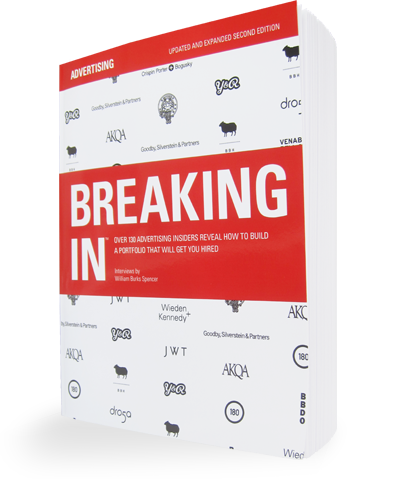Check out some great work from David Covell.
WS:What do you look for in a portfolio coming from a student or someone who hasn’t worked in the industry before?
DC:For students, I look at fundamentals. And I find that it’s really hard to find students now who [have that]. I don’t know what it is—whether it’s the university courses that are being taught now or what—but it seems like those fundamentals are going by the wayside in lieu of what I see as “style,” especially illustration style. There is this weird thing happening now in design, where the designer has become the artist. Where selling your wares, as, say, a T-shirt designer, has become the thing…the utmost in the young students’ minds. It’s too bad because I find that a lot of the fundamentals like grids and typography, and even mark-making, has really gone by the wayside. Just simple, formal training, like how to create tension in the composition—you don’t really find that as much anymore. So that’s what I look for: typography, the ability to make a clean, beautifully drawn mark that also has good content in it as well. Not just for style’s sake, but just a very good story within the mark itself.
WS:So if someone came here with a book that was not done on a computer but was just sketches, and the ideas were good enough, would you consider hiring them? Or do you really need to see layouts?
DC:If the ideas are strong, they speak for themselves. But it would be fantastic to see the thinking behind a project, and I would probably like to see both sketches and finished work. We’re a design firm, so process is important. But we are also about communications, marketing, and advertising. So I do appreciate really good storytelling within a book itself as well. And if someone brought both sketches and finished work, that would be a powerful thing.
WS:What do you think about seeing things that aren’t design in a book? Like photography, or writing, or other things?
DC:I think designing and writing sort of go hand in hand a bit. And it is important for a designer to be able to direct a photographer, so I guess, if you already have a photographic eye, then yeah, that would be great to see. I find less inspiring people’s personal artistic endeavors. Paintings and things like that usually are not so great and often distract from the design part of it. You can sort of see books where the designer wishes he or she were the artist. And to me there’s a real distinction.
WS:Do you have any tips for someone who’s just starting out on how to improve or how to get into the industry?
DC:Edit. Be really ruthless on what you put in your book, I think. Because I find a lot of books that go on and on with weaker projects. It is better if you only show me three great projects as opposed to six where three of them are just mediocre—that always distracts me a little bit. And, just in the book, think about being as professional and clean as possible. I would take a cue from a photographer’s book, actually. I respond more to books where you just show me the work in a really clean, pristine way. I think the work should speak for itself and not necessarily have overly done packaging behind it.

Comments are closed.